1905 Mukti, India Revival (5 Locations)
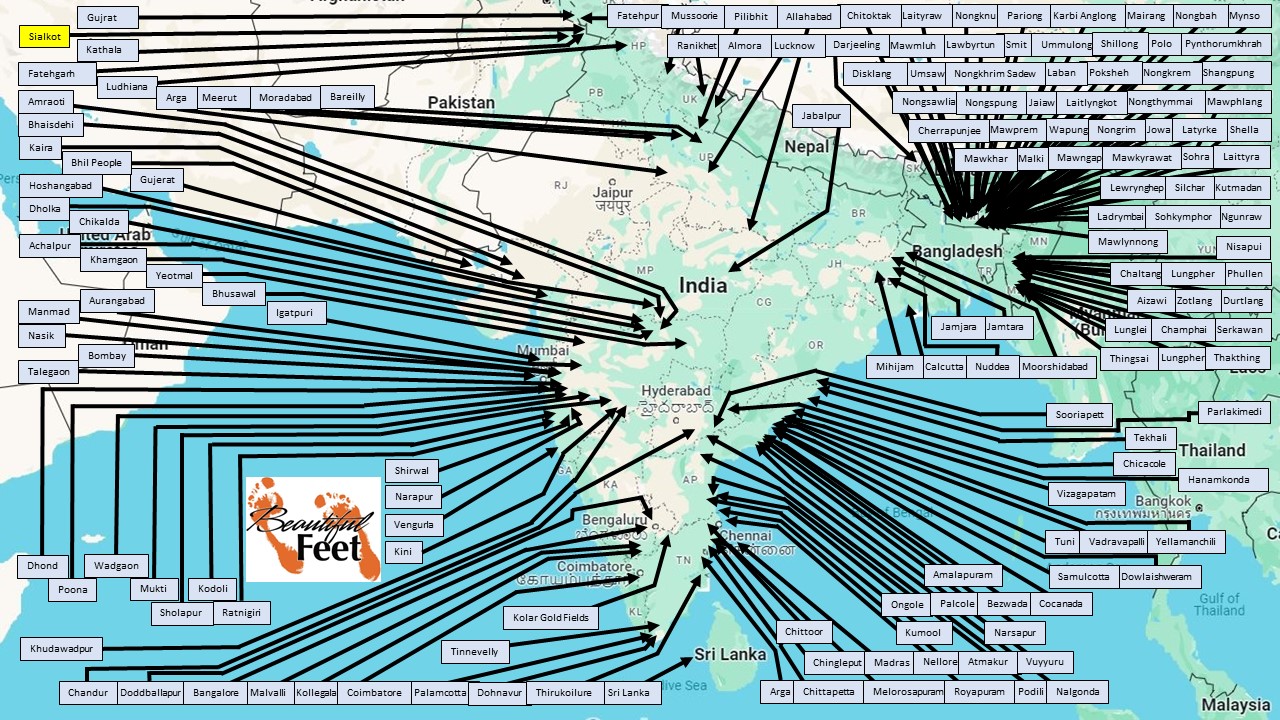
Some of the many revivals that spread across India from 1904-1906
Background to this Series of India Revivals
From 1904-1906, revival swept across India, touching every mission station and church, regardless of the denomination. Episcopalians, Presbyterians, Congregationalists, Baptists, Lutherans, Methodists, Brethren, Anglicans, Christian and Missionary Alliance, London Missionary Society, and the YMCAs and YWCAs, wherever the revival was welcome, blessings came. In addition, it fostered significant unity, breaking down previous barriers between denominations.
The 1904 Sialkot, India Revival appears to have been the spark that ignited the sweeping fires. Subsequently, upon receiving reports of the 1904-1905 Welsh Revival, prayer for revival intensified to such an extent that revival in India seemed unstoppable. The outcomes are documented in the following accounts:
- 1904 Sialkot, India Revival (Over 5 locations)
- 1905 Khasi Hills Revival (Dozens of Locations)
- 1905 Mukti Revival (5 Locations)
- 1905 Revival at Dohnavur (2 Locations)
- 1905 India Revivals I (20 Locations)
- 1905 India Revivals II (8 Locations)
- 1905 India Revivals III (5 Locations)
- 1906 India Revivals IV (10 Locations)
- 1906 India Revivals V (8 Locations)
- 1906 India Revivals VI (8 Locations)
- 1905-1906 India Revivals VII (9 Locations)
- 1905-1906 India Revivals VIII (14 Locations)
- 1906 India Revivals IX (8 Locations)
- 1906 Aurangabad, India Revival (5 Locations)
- 1906 Mizo, India Revival (13 Locations)

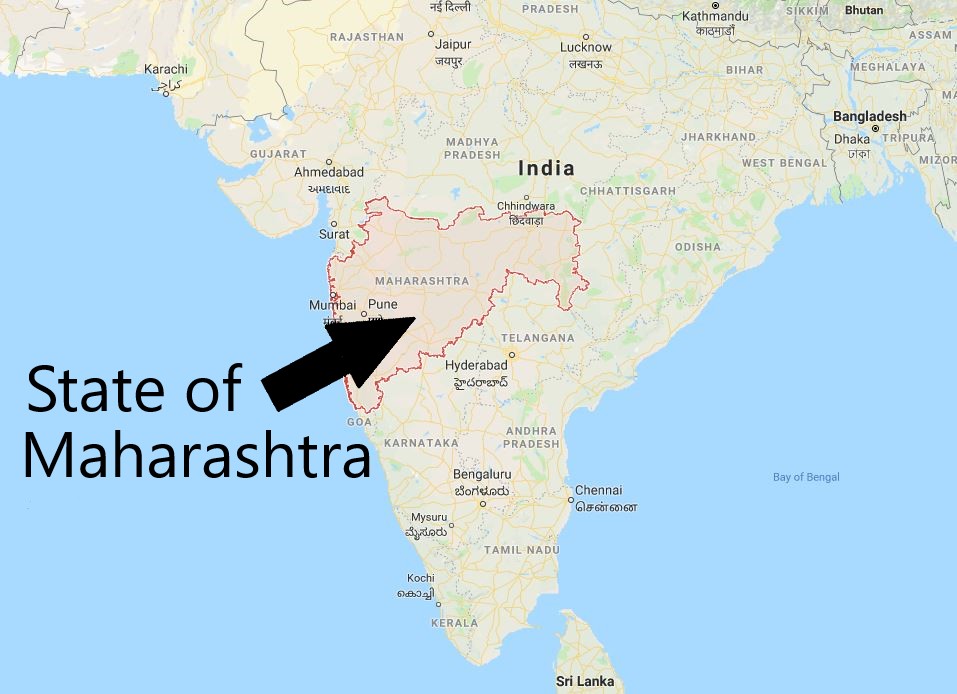
The 1905 Mukti Revival occurred in the Indian state of Maharashtra, at the Mukti Mission just to the north of the town of Kedagaon.
Preface to this Post
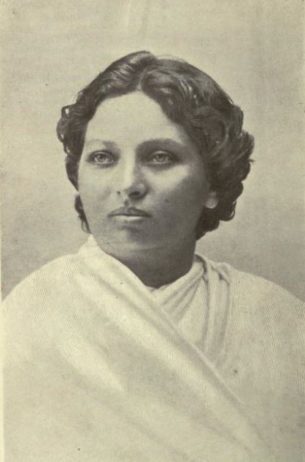
Pandita Ramabai
(1858 -1922)
This revival took place at the Indian mission known as Mukti (salvation), located one mile north of Kedagaon, India. Mukti was founded and led by Pandita Ramabai [1858-1922], who was the first woman to receive the esteemed title of “Pandita” (scholar) from the faculty of the University of Calcutta. This title was granted to those with demonstrated proficiency in reading and teaching the Puranas (Hindu literature) from the Sanskrit language,
Ramabai taught Sanskrit in England beginning in 1883. While in England she converted to Christianity and was baptized in the latter part of 1883 and subsequently traveled to the United States to study. In 1889 she returned to India and began her social reform work, initially focusing on the education of girls and widows. By 1905 Ramabai had the responsibility for over 2,000 people who were living at the Mukti Mission. That ministry is still in existence today.
Introduction
During the years 1904-1905, the Church of Jesus Christ was making tremendous gains due to an awakening that was being experienced globally. Regarding the many local revivals that were taking place in India during this time, a veteran missionary stated:
It will be difficult to dissociate our experiences from the great spiritual movements throughout the world. Ours seems to form only a small part of a wave that at present is encircling the globe.
Extraordinary Prayer
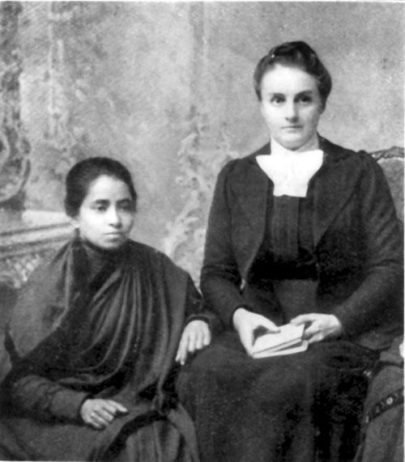
Minnie Abrams, American
missionary working at Mukti
(with Jivubai, an Indian co-worker)
Beginning in 1903 Ramabai became increasingly interested in the prayer movement that she saw taking place in many locations around the globe. With the report of revival taking place in Australia that same year, Ramabai sent her daughter, Manoramabai, and the 44-year-old American missionary who was working at Mukti, Minnie Abrams, to catch the fire from the revival and bring it back with them to India. In Australia, the two travelers learned that “unusual praying” is what preceded the revival that occurred there.
In January of 1905, after hearing of the Welsh Revival that had started a few months previously, she began a prayer group at the Mukti Mission. This group was comprised of
. . .seventy of us who met each morning and prayed for the true conversion of all Indian Christians…and for a special outpouring of the Holy Spirit on all Christians of every land.
Eventually this group grew to 550 who were meeting twice daily for prayer.
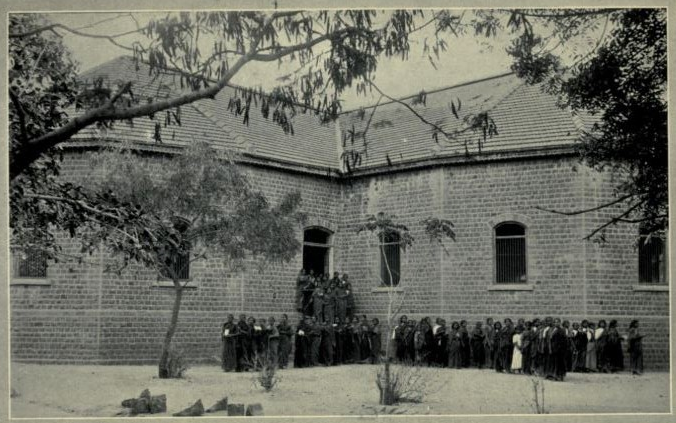
Girls coming out of the church at the Mukti Mission.
What Happened
The Revival Starts at the Mukti Mission
At 3:30 a.m. on June 29, 1905, Minnie Abrams, the American missionary working at Mukti, was awakened by a dorm supervisor with the news that one of the senior girls had suddenly awakened “with the fire coming down on her.”
The supervisor related how she had seen the fire, ran across the room for a pail of water, and was about to pour it on the girl when she discovered she was not on fire—it was a manifestation of the Holy Spirit, like what is found in Acts 2:3.
Abrams went to the girls’ dorm where this activity was taking place, and found them “on their knees, weeping, praying, and confessing their sins.” The revival was underway!
The following evening, June 30, 1905, while Ramabai was teaching, “the Holy Spirit descended with power, and all the girls began to pray aloud so that she had to cease talking. Little children, middle-sized girls, and young women wept bitterly and confessed their sins.”
Occurrences During the Revival
Severe Conviction of Sin
►Girls were stricken down under conviction of sin throughout the mission while in school, in the industrial school, or at their work.
►The students seemed to have a new realization of their sin, as well as Jesus’ sacrifice for their sins. Following that divine revelation, intense joy was experienced and expressed, and it often took hours for a person to pass through all those experiences.
►Many found that they could not eat, sleep, or work till they dealt thoroughly with their sin. They referred to this deep work of God as “a baptism of fire.”
►When there was the confession of sin, it was often accompanied with bitter weeping, which those present said that it was “painful to hear.”
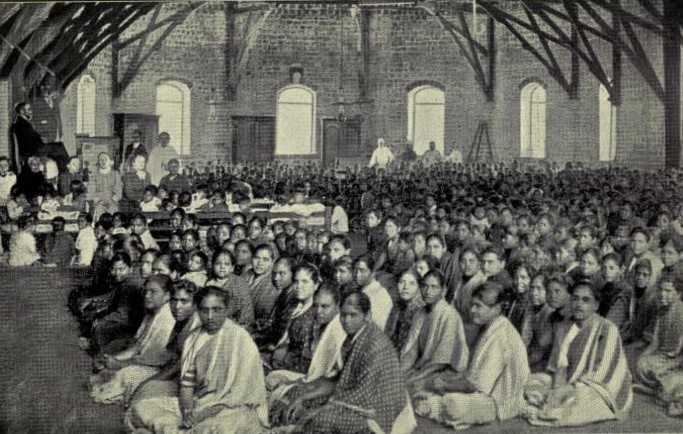
Partial view of the interior of the church at the Mukti Mission.
Manifestations
►Some had visions, including one blind girl who claimed to have seen Jesus.
►There were the reports of speaking in tongues, as well as interpretation of those tongues. Some were praying in English, though they had never learned that language.
►Some testified to a sensation of burning, as they were being dealt with about unrepentant sin. This was referred to as the “baptism of fire.”
►The prayers were often simultaneous, accompanied with loud crying.
►One little girl of twelve was constantly laughing – filled with the joy of the Lord.
►One sang hymns, composing them as she sang, putting them to well-known Indian tunes. Some of the songs were sung in known and some in unknown tongues.
►There were many that were delivered from evil spirits, as workers were aided by the gift of prophesy and discerning of spirits.
The Spirit of Supplication (Zech. 12:10)
► Two little girls had the spirit of prayer poured on them in such torrents that they continued to pray for hours.
►Meetings would last 15 to 17 hours, with continual praise and prayer.
►Prayer in large meetings was said to be “like the rolling thunder; hundreds pray audibly together. Sometimes after ten or twenty minutes it dies away and only a few voices are heard, then it will rise again and increase in intensity; on other occasions it goes on for hours.”
The evangelist G. H. Lang of the Christian Brethren, during his visit to Mukti, said this about that type of praying:
It was a new experience to hear a thousand women and girls praying aloud at one time. The sound rose and fell like the roar of the sea or the wind in a forest. But what to a Westerner might seem like mere confusion did not so strike me, for I had before heard in Egypt a whole school of boys similarly. The mind of each was on his own recitations undisturbed by the noise around. Similarly, each woman and girl was oblivious of the rest..
The renowned revival historian, J. Edwin Orr, commented that he “has heard the same sort of simultaneous praying among European people in Latin America and the Soviet Union.”
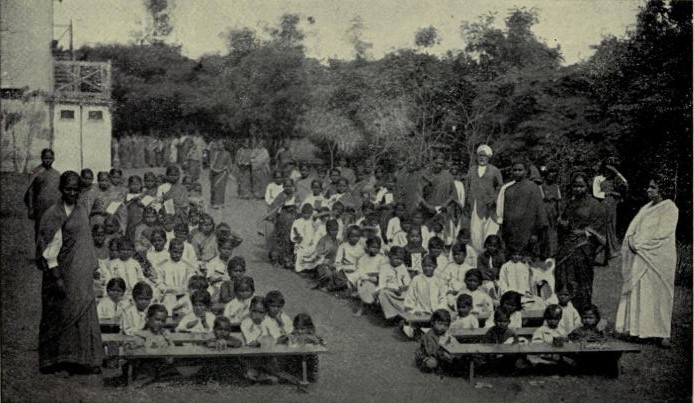
Kindergarten Class at the Mukti Mission
All Programs and Activities Got Sidelined
►Lessons were suspended, and teachers and students entered the school conducted by the Holy Spirit.
As in Every Revival, the Flesh and Satanic Counterfeits Emerged
►Satan tried to counterfeit all he saw. Some who beheld the joy thought they could get it by imitating what they had seen the others do.
All Was Accompanied by Life-Transformations and Greater Passion for Christ and His Work
►Dramatic life-transformations were taking place, giving credence to this revival as being a very true work of God.
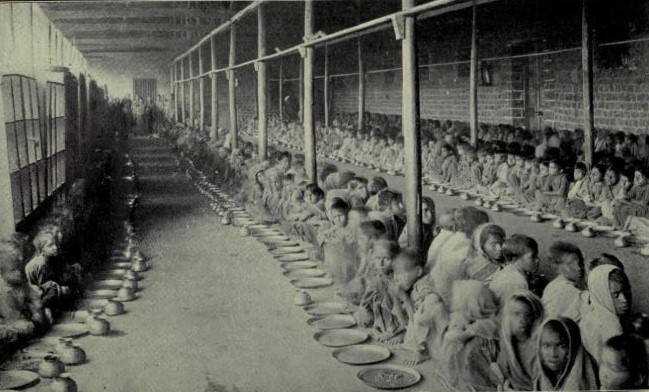
Thousands of meals served every day at the Mukti Mission. Famine struck several times, bringing the mission tremendous hardships.
Was This Extreme Emotionalism?
Being from the elite Brahmin high-caste and well-educated, Ramabai had reservations about the display of emotions and took steps to control the scenes, which she thought were “out of order.” This is how the Lord dealt with her on that issue:
But I soon found that I stopped the work of the Holy Spirit by interfering with it. I wanted to be proper and conduct meetings in our old civilized ways. But God would have none of it. He laid His hand upon me, put me low in the dust, and told me that I had better take my proper place, that of a worm. He said, ‘My thoughts are not your thoughts, neither are your ways My ways.’ I humbled myself under this severe rebuke and took my hand off the work. The Holy Spirit has full liberty.
The Purpose of Every Revival
►Fourteen days after the revival began, Ramabai began assembling teams of believers to carry the revival to schools and mission stations of different denominations, where similar revival fires were ignited.
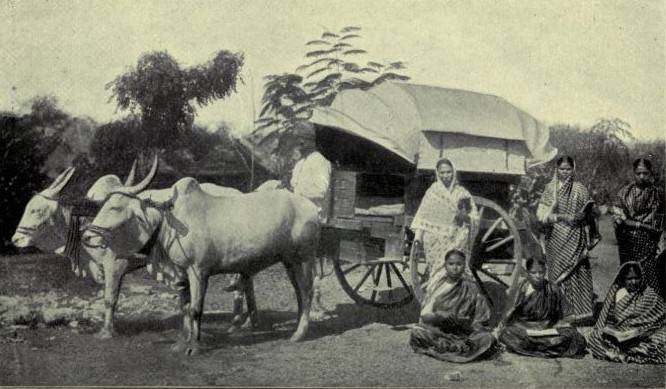
A group of lady evangelists setting out to visit villages in the surrounding area.
►About a month after the revival started someone asked to write an account of what happened. Ramabai, wanting to remain humble, refused permission. That led to a serious depression that affected Ramabai. After prayer concerning the depression, Ramabai sensed God telling her it was because she “refused to give glory to God by not allowing the account to be published.” When she made up her mind to allow the account to be published, the depression immediately left, and the revival story became an encouragement to many in India who were praying for a similar blessing.
►For the evangelistic teams that were sent out, Ramabai said
seven hundred girls and women of the Mukti Mission have given themselves to prayer and the study of God’s Word, that they may go to the places where God sends them to give the Gospel. They are already visiting the villages around, where they sing Gospel hymns and read the Word of God to the village people. About sixty go out daily by turns, so that each one gets her turn every twelfth day. They pray regularly for those they visit. The Lord put this plan in my heart, and He is going before. The people whose turn it is to go out, meet previously for a long prayer meeting. The Lord is strengthening and developing them.
Results of the Revival
►The Mukti Mission became a “center for revival,” as missionaries, as well as Indian Christians, from far and near, came to experience God’s presence, and they left full of a newfound joy and power for service.
►In August of 1905 the Free Methodist Mission at Yeotmal closed its doors to intercede for revival. And during the last week of that month, the missionaries there said
the power of the Spirit came like lightening.
►In November 1905 a team of girls from Mukti were sent to the Maharashtra coast. Upon their arrival they began praying for the local people, and a revival broke out with extraordinary prayer, confession of sins, restitution, reconciliation, restoration—with conversions following.
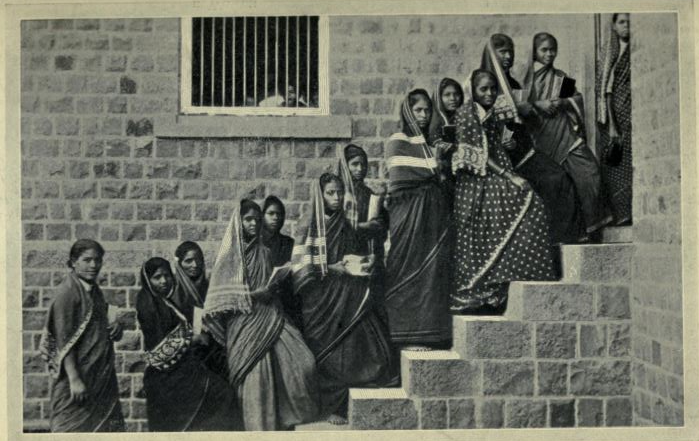
A team of female evangelists going to the Mukti church to pray before starting out for their work in the villages.
►Continuing through mid-1906 Mukti teams were requested to come and visit different regions, and when they did, revivals would start. When the Mukti team led by Minnie Abrams arrived in Aurangabad, they conducted a conference which was attended by fifty preachers and eleven congregations—with Abrams being the main speaker. As always, an awakening developed during that convention.
►The revival in Bangalore (now Bengaluru) started in a girls’ orphanage, and it spread to the local churches. The praying teams of girls from Ramabai’s Mukti compound were instrumental in those revivals starting.
►For several years the revival kept spreading through India. In Dholka, a report in the Christian and Missionary Alliance journal commented that “nearly all” missionaries and many Indian workers had spoken in tongues, with some interpreting.
►The revival affected Anglicans, Baptists, Lutherans, Methodists, Presbyterians, Christian and Missionary Alliance, London Missionary Society, the Young Men’s and Women’s Christian Associations, and more.
►When the story of the Mukti Revival was received in Valparaiso, Chile, in 1907, missionaries and their Chilean friends began to seek the Lord for a similar outpouring of the Holy Spirit. Their prayers were answered during a prayer meeting, when believers began confessing their sins. Manifestations subsequently followed, “including tongues, visions, trances, laughter and crying. They [manifestations] were accompanied by the fruit of changed lives.” The movement from there began spreading to other congregations in Chile (1909 Chile Revival).
►As with every revival, the critics said it was all emotional excess—or worse. Ramabai, in response said,
It is sad beyond all expression that God’s children, who have been praying for years for an outpouring of the Holy Spirit,…should now, when God is beginning to answer their prayer, be so hasty in judging and picking their fellow Christians to pieces.
Sources
► Abrams, Minnie F. (1859-1912) by Boston University School of Theology
► Evangelical Awakenings in Southern Asia by J. Edwin Orr
► Indian Pentecost: Christianity Today by Edith Blumhofer
► Pandita Ramabai: Her Vision Her Mission and Triumph of Faith by Helen S. Dyer
► Pandita Ramabai, the Mukti Revival and Global Pentecostalism by Allan Anderson
► Pandita Ramabai: The Story of Her Life by Helen S. Dyer
► Revival in India: Years of the Right Hand of the Most High by Helen S. Dyer
► The Flaming Tongue by J. Edwin Orr
► The Pandita Ramabai Story by Pandita Ramabai
Return to List of Revival Stories
Chet & Phyllis Swearingen:
Office: (260) 920-8248
romans1015@outlook.com
Beautiful Feet
P.O. Box 915
Auburn, IN 46706

